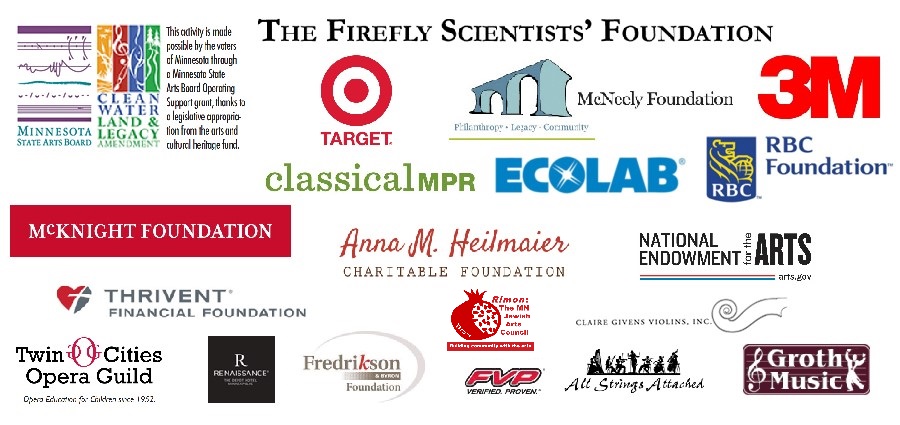Please click here for COVID-related updates
Rodney Marsalis, Trumpet
Rodney Marsalis, Trumpet
Fri. Jan 13 Metropolitan State University 7pm
700 East 7th Street, St. Paul, 55106
Sat. Jan 14 Basilica of St. Mary 2pm
1600 Hennepin Avenue, Minneapolis, 55403
Program
Overture to TreemonishaScott Joplin
ConcertoHarry James
Rodney Marsalis, trumpet
Scottish Lamentarr. Jay Fishman
Rodney Marsalis, trumpet
Concerto for Trumpet in E Flat Major, movement 3Johann Nepomuk Hummel
Rodney Marsalis, trumpet
Symphony No. 1 in D Major, D. 82Franz Schubert
Program Notes
Overture to TreemonishaScott Joplin (1867/68 – 1917)
Scott Joplin composed three works for the stage. The first, The Ragtime Dance, depicted a typical African-American dance gathering; it was performed in 1899 at the Black 400 Club in Sedalia, Missouri. The second work, A Guest of Honor, about Booker T. Washington’s dinner with Teddy Roosevelt at the White House, premiered in East St. Louis, Illinois, in 1903. Joplin took the production on tour. A series of financial mishaps, however, ended the performances. The score is now thought to be lost.
Joplin’s third stage work was the opera Treemonisha. The libretto, also written by the composer, tells the tale of the adopted daughter of former slaves Ned and Monisha. Because the baby was found under a tree, she is named Treemonisha.
Treemonisha deals with the conflicts in African American culture at the end of the 19th century – the desire to move into mainstream American society countered by the strange pull of the old African ways and superstitions. Treemonisha is kidnapped by the so-called “conjure men,” but is rescued and returned home, where she becomes a leader among her community. The theme of the work – the importance of an education for both men and women – is powerfully set against music that borrows all of the elements of European opera and merges them with the unique rhythms of ragtime. Indeed, one of the opera’s main ensembles, “A Real Slow Drag,” is a true apotheosis of the Joplin style.
Joplin was never able to raise the funds to produce Treemonisha, a factor that contributed to ill health at the end of his life. It was not staged until 1972, when it was presented under the auspices of Morehouse College in Atlanta, directed by Katherine Dunham and conducted by Robert Shaw. Although the work was produced shortly thereafter at Wolf Trap in Vienna, Virginia, its true premiere for the opera-going public was at the Houston Grand Opera in 1975, when Carmen Balthrop sang the lead role. Despite Joplin’s disappointment over Treemonisha, today it is fast becoming a popular work in the American opera repertory.
Notes taken from the Library of Congress
ConcertoHarry James (1916 – 1983)
Harry James was a well-known American trumpet player and big band leader during the mid and late 20th century. At age eight he started taking trumpet lessons from his father, who insisted on maintaining a rigorous practice routine that eventually allowed him to develop a sensational technique and a very clear and clean tone. In the early 1930s James started playing in local dance bands, and in 1937 he briefly joined Benny Goodman’s band. In 1939, with the financial backing of Benny Goodman, he created his own big band in Philadelphia, and after adding a string section he changed the name to “Harry James and His Music Makers.” With this group, he recorded several hits, performed in several movies, and was the first high profile band to hire Frank Sinatra. Other notables who worked with the band include Helen Forrest, Buddy Rich, Corky Corcoran and bassist Thurman Teague.
The Concerto is not really a concerto in the normal sense, but rather a short, one-movement jazzy, four-plus minute work that is a real tour de force. It has spell-binding technical requirements, and in all aspects is a showpiece that demonstrated James’ complete control of the trumpet. The Concerto was part of a 1942 musical that also featured the Andrews Sisters, Joe E. Lewis and others to help promote the World War II recruiting effort. jf
Scottish Lamentarr. Jay Fishman (b. 1947)
The original tune for the Scottish Lament was composed by the Scottish fiddler Niels Gow, who was born in 1727 and died in 1807. At age eighteen he entered and won a local competition that was attended by the Duke of Atholl, who soon became Gow’s patron. The patronage provided work playing for the local nobility’s balls and parties and led to a prolific output of original and arranged “dance tunes,” many of which are still played today. The lament was composed after the death of his wife.
The melody for the lament is probably best known today as Ashoken Farewell, which was created by Jay Unger and Molly Mason in 1982 to be used as the closing song of their Ashoken summer music and dance camp. It was later used by Ken Burns in his Civil War documentary for Public Television. jf
Concerto for Trumpet in E Flat Major, movement 3Johann Nepomuk Hummel (1778-1837)
Hungarian composer Johann Nepomuk Hummel was a child prodigy who studied with Wolfgang Amadeus Mozart. He was famous for being an exceptional pianist, and he regularly concertized throughout Europe. He later became a very well respected and successful composer and wrote in all genres except the symphony, possibly because of Beethoven’s intimidating and masterful symphonic output.
Hummel’s trumpet concerto, which was completed in 1803, was originally composed for a keyed trumpet. This instrument had five keys instead of the three valves found on modern trumpets. The first keyed trumpet was most likely made in Dresden and was designed so that the performer could play chromatic notes (all the sharps and flats of the scale), which could not be done with the contemporary natural horns (no valves or keys, and all of the notes were controlled by the embouchure). The trumpet concerti of Hummel and Franz Joseph Haydn were two of the most prominent of the day, and they were both written for the keyed trumpet. When the modern three valve trumpet was developed in the 1840s, the keyed trumpet fell out of favor. These and nearly all other trumpet concerti are now performed on the modern trumpet. jf
Symphony No. 1 in D Major, D. 82Franz Schubert (1797-1828)
An interesting fact about Franz Schubert is that he is the only master Viennese style composer to have been born and raised in Vienna. He studied violin with his father, piano with his older brother, Ignaz, and then later with the local church organist Michael Holzer. It was readily apparent that the young Franz had an enormous talent, and Holzer wrote of his pupil:
If I wished to instruct him in anything fresh, he already knew it. Consequently, I gave him no actual tuition, but merely talked to him, and watched him with silent astonishment.
Schubert’s musical education took a major turn in 1808 when he became a choirboy in the court chapel, which also allowed him to study at the Imperial and Royal Seminary. He had several notable teachers, including Antonio Salieri, who many might remember as Mozart’s nemesis. There is considerable question as to the value of Salieri’s help, and many scholars have suggested that Schubert’s lack of large-scale musical organization might be traced back to Salieri.
Schubert had a love for poetry. The ease in which he was able to create melodies to texts is remarkable. I remember one of my music history teachers mentioning that Schubert was so talented that he would start composing a new song even before the ink was dry on the paper of his last.
Between the years of 1811 (when he was a mere fourteen years of age) and 1828, Franz Schubert attempted to compose thirteen symphonies. Seven of these were completed. One, although not completed, is performed in that version (the Unfinished). The rest were simply forgotten or neglected. The symphonies received few performances during his lifetime; the first was probably performed by the school orchestra, and not much beyond that. In spite of the lack of performances and the fact that these were early works, the symphonies had their admirers then, and of course continue to have admirers to this day. Antonín Dvořák, after seeing the scores, remarked:
The more I study them, the more I marvel.
The symphonies come at a time of transition from the domination of classicists Franz Joseph Haydn and Wolfgang Amadeus Mozart on the early side, and classicist/pre/early romantic Beethoven on the later. One can see influences of all three of these masters in the first symphony, but it still has a definite personal “Schubertian” stamp. The first movement has the unusual characteristic of taking the theme from the slow introduction, and then introducing it in the recapitulation of the fast section. The second and third movements show influences of both Haydn and Mozart, but neither of those two masters could write a singing tune like Schubert. And the last movement owes an homage to Beethoven’s Prometheus, to which some of the themes bear a striking resemblance. jf

